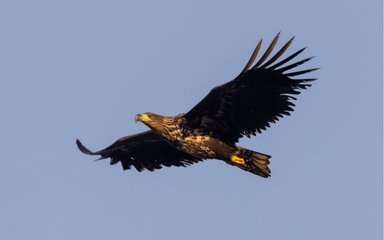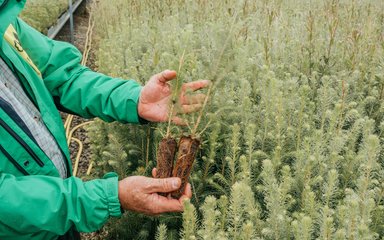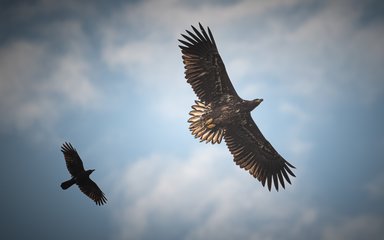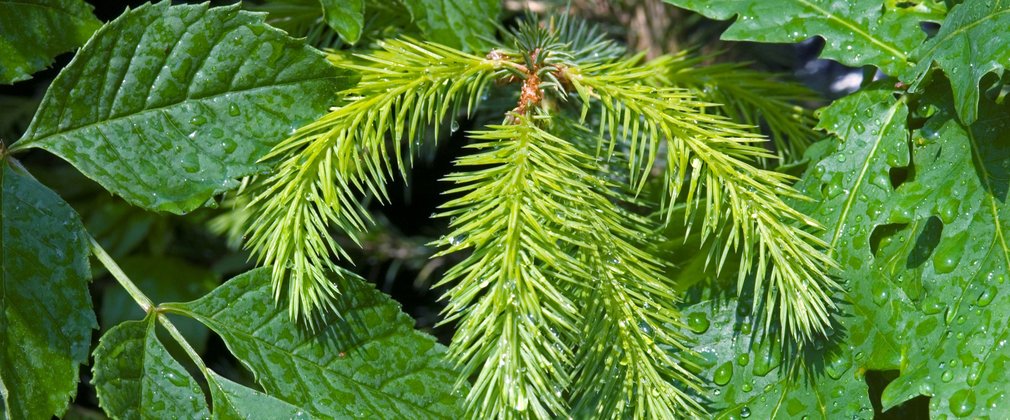
The nation’s forests face a number of threats, from climate change to pests and disease. If they’re to survive and thrive in the future, we need to make them more resilient to these threats. Increasing the diversity of our forests, including the age and species of trees, and where seeds come from, is a key factor in boosting resilience and securing important wildlife habitats and a vital supply for sustainable timber.
Why tree species diversity is important
We know our climate will be different in the future, and we’re already seeing the impacts of more frequent extreme weather events, such as wildfires and flooding. We don’t know exactly which tree species may suffer more from threats in the future, like climate change and new pests or diseases, so growing different types of tree mitigates these risks.
Tools to help
It's important that the trees we plant will survive and are suitable for each site’s unique characteristics – we need the right tree in the right place. We use a combination of tools and assessments to help with this.
Each site is carefully assessed for its characteristics, such as soil type, aspect and microclimate, which can all impact whether different trees will thrive. Together with our decades of expertise, Forest Research's Ecological Site Classification tool helps us choose the right species, and we use a climate matching tool to see which places in the world currently experience the climate we're projected to have in the future.
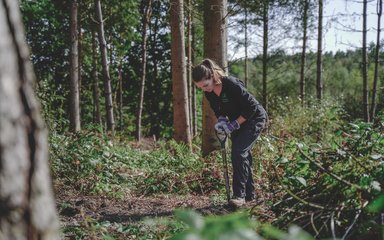
Which types of trees do we grow?
A fifth of the trees we plant are alternative species predicted to cope better with climate conditions, including types of redwood, cedar and maple. We’re also breeding native trees more tolerant to pests or disease. Where we can’t supply trees from our own nurseries, we buy UK grown. While we do still grow the most common species for quality timber, such as Sitka spruce and Douglas fir, modern forestry no longer relies on just a handful of species.
Working with partners, we carry out trials and take part in studies to learn if different types of trees may do better in the conditions we expect in 2050 and beyond. Research also helps to make sure new, alterative species being trialled will not harm existing forest ecology.
Species for the future
We have created a ‘species for the future’ list to help our expert nursery teams plan for the tree species we're likely to need more of in the future. This list of 30 species was created by asking experts what the most important factors will be when deciding which trees to plant in the future, and then using the most up-to-date scientific evidence to score tree species against these factors.
Where will these trees come from?
Trees species, just like people, have different characteristics depending on where they come from. These varying traits within a species may help some to survive changes better than others, and there's a range of different methods in use to help keep these characteristics alive. So it’s not only different species that makes a forest more diverse, but what's in their genes!
Where there is enough seed in the ground from surrounding trees to develop a woodland, natural regeneration helps to make sure trees are well adapted to their local environment. However, this take times and leaves young trees vulnerable to deer and squirrel damage, so planting saplings can help new forests to grow more quickly. Using saplings grown in our nurseries from local seed increases their rate of survival.
Sourcing south
We’re also sourcing trees from places where the climate is similar to how ours might look up to 100 years from now, typically from two to five degrees south of the planting site. Despite being the same species of tree, genetic differences mean they’re better adapted to certain conditions than local trees. This is called assisted migration.
Different strategies are suitable in different situations and we tailor our approach accordingly. Overall, using a range of approaches (including natural regeneration, local seed and assisted migration) helps to increase genetic diversity and the capacity of our trees to adapt to future conditions.
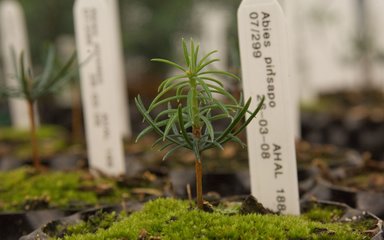
Alice Holt Forest in Surrey has oak trees grown from seeds sourced from the Loire Valley in France, which is four degrees south of the forest and was chosen to match the climate projections for 2050.
A forest for all ages
It’s not only the type of tree that make a forest diverse; It’s also their height and age. A mix of tree ages creates a more stable forest ecosystem. As some trees are harvested, or older trees die, there are already younger trees growing to take their place. We look after our oldest trees and keep deadwood in the forest to support wildlife.
The structure of a stand of trees is dependent on the type of woodland, its location and previous management. Diversifying the structure can increase resistance to the impact of storms and reduce vulnerability to pests and diseases. Although areas of single age plantations still exist in the landscape, we’re working closer to natural cycles by ensuring a mix of ages where possible. By carefully planning the design of forests we can diversify their age structure, which helps to create more visually appealing, biologically diverse and resilient woodlands.


